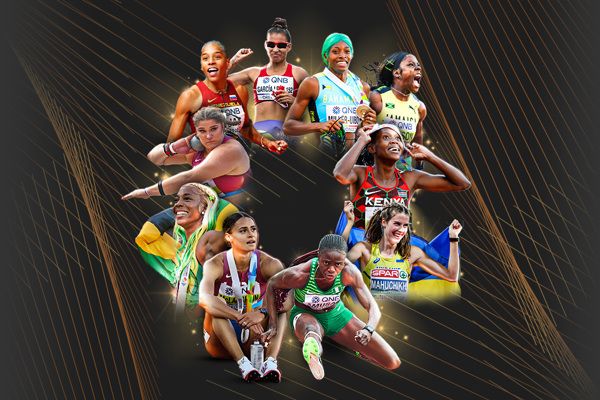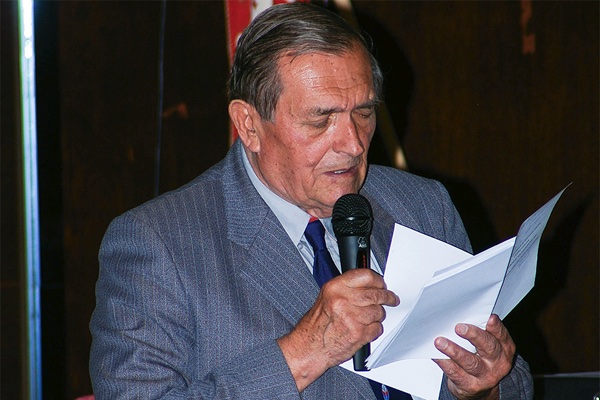The Ulbrich/Jörbeck tables managed to survive for more than 20 years. This is another proof (if there were ever a need for that) of the extreme conservatism of the IAAF/WA. They had a set of tables which were manifestly unfair and, moreover, they have been offered a possibility to remedy that, through the work of G. Purdy. And, still, they clung to their tables despite the fact that they were counterproductive for the combined events. Finally they saw the light. Or perhaps Jörbeck had at that time retired (he passed away in 1989) and the technical committee could, at last, move forwards. Be that as it may, in 1982 the IAAF appointed a working group, under the direction of V. Trkal, tasked to prepare new scoring tables.
J. Trkal, the mastermind behind the 1985 tables
It is funny to point out here that Purdy's was not the only proposal for new scoring tables. Bob Sparks, a renowned athletics statistician, proposed in 1981 a new set of tables which were in fact accepted by the 1981 IAAF Congress. However, just like Purdy's, these tables were highly progressive and this led to strongly voiced protests from coaches and athletes. So the IAAF backpedaled and asked the Technical Committee to prepare a new proposal.
The important thing is that Trkal understood the physical/physiological basis of scoring. In his own words:
"My starting point was the idea that athletic performance is physical work. This is represented primarily by kinetic energy of the given system, irrespective of whether a run, jump, or throw is involved. Speed v is to the second power in all cases, and this indirectly implies a progressive form for the necessary curve. The American J. Gerry Purdy, PhD., has published two articles on the evaluation of performances in athletics, and I studied these".
Under his guidance the working group organised their quest for the new scoring tables along a set of nine principles:
1. The tables should only be used for combined events.
2. The results in different disciplines that are evaluated with approximately the same point value should be comparable as far as the quality and difficulty of achieving these results are concerned.
3. The tables in all disciplines should be:
a. a modification of current tables,
b. linear in all disciplines,
c. very slightly progressive in all disciplines (it was proposal 3c that was favoured by Trkal and that was finally adopted).
4. The tables must be usable with combined events for beginners and juniors as well as top-class athletes.
5. There will be separate tables for men and women.
6. The tables must be based on decathlon statistics, taking into account the statistics of specialist athletes in the individual disciplines.
7. The tables should be usable now and in the future.
8. The sum of points scored by world-class athletes should remain approximately the same.
9. As far as possible, the tables should eliminate the possibility that an athlete specialising in one discipline is able to acquire sufficient points in that discipline to overcome low scores in weaker disciplines and beat more versatile, all-round athletes.
The new tables were adopted in 1984 and were used in combined event competitions from 1985 onwards. They are valid today with just a few modifications in order to account for the changes in the javelin implement and the introduction of the women's decathlon.
Zarnowski in his history of scoring tables is particularly unfair towards the new tables. He says that the IAAF has issued neither a mathematical nor a statistical explanation of the tables. And concludes that "on the whole [they] prove to be less reliable than their 1962 counterpart".
The mathematical expression of the new scoring tables is particularly simple where x is the performance for field events.
When it comes to track events, though, instead of using a velocity-based scoring
the authors of the tables opted for the use of time
which, transcribed in terms of velocity, would read asA scoring based on such an expression would be, in principle, regressive. Fortunately, in practice, the domain of variation of velocity is rather small (there is just a factor of 2 between the null-score and the max-score velocities) and in this domain the relation of points to velocity is practically linear.
In a future publication I will explain how the scoring formula of the WA tables is related to the Weibull probability distribution which has been proposed as an adequate descriptor of the human performance. (But the mathematically oriented readers can find all the details in "Distribution of performances and scoring in athletics", by J. Meloun, J.G. Purdy and myself which appeared in Math. and Sports 3 (2022) 1).
With this post the second season of scoring theories is complete. But just as in the case of the "Long and arduous road of women to the Olympics", there will be bonus tracks, like the one where I told the story of the travel of G. Purdy to Copenhagen and his meeting with the IAAF technical committee.












